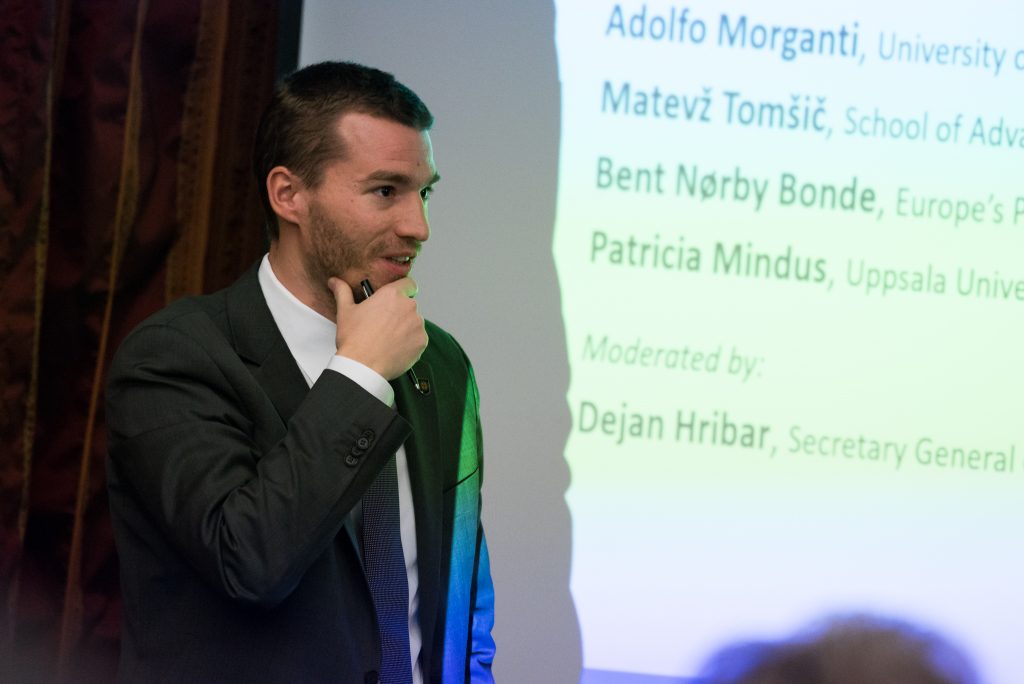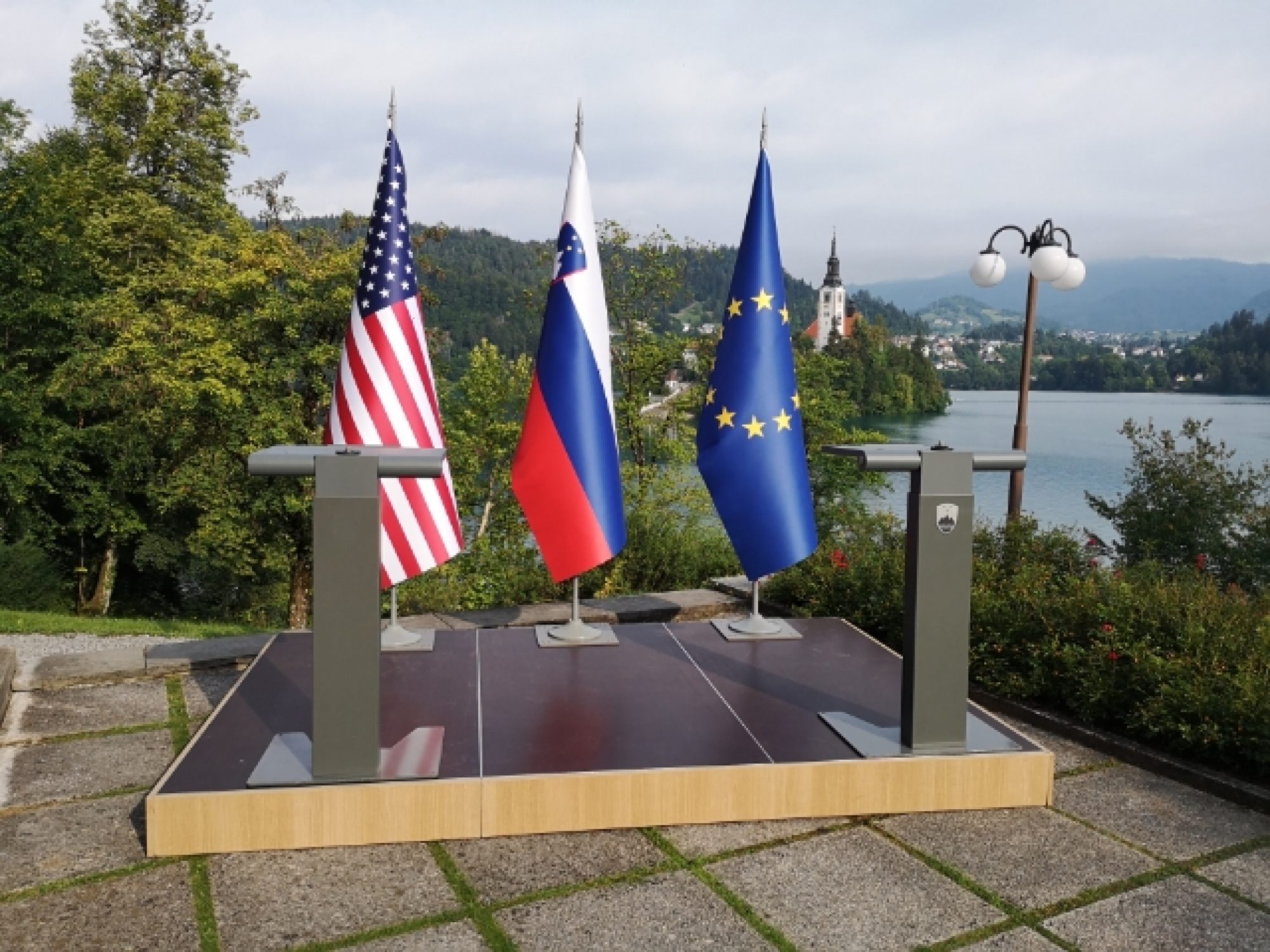My research interests lie in International Security, International Political Economy, International Relations Theory, Grand Strategy, Power, Geopolitics, Cybersecurity, European Politics, and Philosophy of Science.

I am currently working on several research projects:
- Pervasive Hegemony Theory
- Geopolitics: The Nexus of Everyone and Everything
- Sanctioning Iran: The Case of a Latent Blowback for the European Union – with Karolina Pracek
- Comparing the EU and NATO Approach to Managing and Regulating Cyber Threats – with Ivan Ivanov
- Understanding EU Peacebuilding: organizational assets, decision-making and external legitimacy – with Ivan Ivanov
- Economic Power: Primus inter Pares? – with Hector Bahamonde
- Economic Intelligence: Different Structures, the same Objectives
Please find bellow brief descriptions. For details please contact me via email.
Pervasive Hegemony Theory
Most International Relations literature suggests that when power becomes imbalanced, such a situation will be corrected – hegemony cannot persist over time. However, history offers us several examples of hegemonies lasting over a century, e.g. Ancient Rome, Ming China. So far scholars have offered four explanations for such enduring hegemony (Coercive Hegemony, Cooperative Hegemony, Cultural Hegemony, and Opportunist Hegemony), with a common mechanism: ineffective balancing. Namely, the hegemon has the capacity to put balancing at bay using different strategies flowing from the nature and fundamental principles of its hegemony. Hence, the hegemon uses coercion, institutional leverage, ideological indoctrination, or buyout, in order to assure its hegemony can endure for a while. Yet, through time and through crisis the capacities of the hegemon to make the balancing ineffective diminishes. As such, these theories all share a similar assumption—imbalance is transitory and thus hegemony will breakdown. But what if that common assumption is incorrect. What if under certain conditions, imbalance is not resisted, but rather serves interests of non-hegemonic states as well as the hegemon? Twentieth and twenty-first century US hegemony suggests such conditions may exist. This American imbalance displays a different nature and fundamental mechanism behind its functioning. Although US relative power is declining, its global monetary network centrality is not. Moreover, even in times of severe crisis, such as global financial crisis in 2008, we have not witnessed US monetary centrality decline. In fact, quite the opposite is true. The dynamics associated with an imbalance of power in favor of the United States runs against the expectations of existing theories. Therefore, we need a different theory to make sense of these particularities and make better policy recommendations. Thus, I have developed a Pervasive Hegemony Theory, which is based on a ‘buy-in’ dynamic that better explains US hegemony compared to existing alternatives. The ‘buy-in’ dynamic denotes the behavior of non-hegemonic states as well as the hegemon, in which all countries continue to use hegemon’s monetary unit in their monetary relations, even in times of severe economic crisis. This reinforces the hegemony. Even though non-hegemonic states may not prefer the imbalance of power, they prefer conducting their economic relations within the hegemon’s monetary unit and thus perpetuate the imbalance. Subsequently, they can only maximize their selfish interests and autonomy by buying-in to the hegemony and reproducing the imbalance of power. Conversely, the hegemon may not like the current rules and norms of the international system, but it can change those and obtain the support of the non-hegemonic states, if it accepts to provide its monetary unit. In pursuing this argument, I use both quantitative (Network Analysis and Time Series) and qualitative methods (Process Tracing). I use the first on available economic data to establish the claim of US economic centrality, and that it is something different than what we have seen in the past. Second, I process trace the mechanisms of hegemonic and non-hegemonic state behavior in two international monetary systems (Bretton Woods and post-Bretton Woods) in order to isolate and identify the buy-in mechanism and provide an explanation of enduring imbalance – ownership over the central monetary unit in global economy. The project, thus, assessing existing theories indicates their inadequacies in explaining an important international phenomena and provides a more robust explanation through the construct of monetary unit centrality.
Geopolitics: The Nexus of Everyone and Everything
International Relations literature offers multiple different definitions of geopolitics. However, none of existing definitions takes the etymology of the term into consideration geopolitics is compounded by two ancient Greek words: gê (earth) politikós (statesman). The first denotes material, determinism, objectivity, and structure; while the second suggests ideational, interpretivism, subjectivity, and agency. Different existing definitions of geopolitics stress, either one or the other dimension. Yet, I argue that the ontology of geopolitics resides within this dichotomy. Therefore, the article extrapolates two ontological continua from the etymology of the term geopolitics: material-ideational, and practice-science and presents a taxonomy of different definitions of geopolitics. Furthermore, I claim that geopolitics should be defined as the nexus point of the mid-way points on both continua. Using such an ontological matrix I compare different definitions of geopolitics and elaborate the implication of the novel type of definition of geopolitics for policy-making, which I argue would be more effective for bridging the academia-politics divide.
Sanctioning Iran: the Case of a Latent Blowback for the European Union – with Karolina Pracek
When states use sanctions in their foreign policy they must be prepared to respond to target’s retaliations. Otherwise, the initiating party may be faced with a ‘Sanction Blowback’. A blowback is most easily grasped in its explicit manifestation – physical or economic cost resulting from a target retaliation. Nevertheless, we argue that besides ‘Explicit Retaliation’ (e.g. warfare), which may lead to ‘Explicit Blowbacks’ (e.g. loss of territory), a target can use ‘Latent Retaliation’ (e.g. lawfare) which may lead to ‘Latent Blowbacks’ (e.g. loss of status). Thus, using two variables we develop a classification of target’s response to sanctions. Namely, the levels of target’s resolve and the power spread between the sender and the target determine target’s choice of a response. We focus on one such variation − ‘Latent Retaliation’ (installed by the high target resolve, and a big power spread) – and further explain how it causes a ‘Latent Blowback’. We argue that a Latent Retaliation needs to be partnered with initiator’s ‘Blind Side’ to cause a ‘Latent Blowback’. We define ‘Blind Side’ as a sloppy preparation and execution of sanctions, which opens a window of vulnerability that the Latent Retaliation takes advantage of. We trace the cause for the Blind Side to the big power spread between the sender and the target, and to the defective governmental politics. We find evidence for our theory in a case study of Iranian lawsuit wins against the European Union (EU), which disputed EU sanctions against Iranian entities.
Comparing the EU and NATO Approach to Managing and Regulating Cyber Threats – with Ivan Ivanov
The North Atlantic Treaty Organization (NATO) and the European Union (EU) have paid close attention to cyberthreats but have developed different policies to combat them. Moreover, given these two organizations’ (IOs) commonalities in membership, region, and culture, it is striking to see substantial variation in their response in addressing cyberthreats. Why is this the case? We present a new typology how IOs respond to new threats, where the key determinants are: fungibility of organizational assets, and the complexity of the IOs’ decision-making process. The interaction of these two variables leads to four types of IO response to new threats: effective response, institutional ineptitude, muddling through, and a stop-and-go response. Based on the proposed framework, we examine the two similar cases – NATO and the EU – in their cyberthreat responses. We find that between 2001 and 2016 NATO has made significantly greater advancement in cybersecurity than the EU resulting in effective response, whereas the EU has muddled through in its response.
Understanding EU Peacebuilding: organizational assets, decision-making and external legitimacy – with Ivan Ivanov
This paper introduces a new dataset on European Union (EU) peacebuilding operations and tests various explanations accounting for these operations’ efficacy as a part of a larger research project which explores how institutional assets and organizational decision-making drive organizational response to emerging threats. Drawing on the dataset, our work conducts fuzzy set Qualitative Comparative Analysis (fsQCA) that studies how fungible assets, organizational decision-making and external legitimacy impact the efficacy of these missions. Our analysis shows several important findings about EU peacebuilding missions. First, when the EU possesses fungible assets and displays a streamlined decision-making process, the organization delivers an efficient response. In this case, there is no need for external legitimacy for efficacy of EU peacebuilding mission. Second, when EU does not display streamlined decision-making but deploys fungible assets, external legitimacy is a necessary condition to ensure EU’s high efficacy of response. Third, our work did not find any missions where the EU deployed limited fungible asserts and displayed streamlined decision making which indicates that the organization acts as “a prudent peacebuilder” reluctant to commit to interventions for which the it is not properly equipped in an attempt to avoid a worst-case scenario for its peacebuilding activities.
Economic power: Primus Inter Pares? – with Hector Bahamonde
Power remains one of the crucial and most studied concepts in International Relations. In recent decades a prevailing notion became present in the literature explaining that the economic power is the most fundamental type of power—a sort of a prerequisite for all other forms of power (military, political, cultural). Yet, such an assumption has never been properly tested. Therefore, to test this assumption, the paper introduces a new time-series method to Political Science—Global Vector Auto-regression. The method enables the researcher to perform big-n and big-t hypotheses tests. In this paper, we test if economic power is a prerequisite for military power. We use four variables from National Material Capabilities from the Correlates of War dataset, where two are used as proxies for measuring economic power, and two are used to measure military power. We run the analysis for two separate time-spends: first from 1871 through 1913, and from 1945 through today. Our inquiry suggests that the role of the economy has changed through history. Namely, in 19th century it was the military power that drove (Granger-caused) the economy; yet, since 1945 the roles are reversed. Finally, we identify future research projects how to test also the relations between the remaining two power factors (political and cultural).
Economic Intelligence: Different Structures, the same Objectives
I Compare the structures of Economic Intelligence bureaucracy in different countries, and present a three-fold typology, which point and explain advantages and vices of different variations of Economic Intelligence structure.
